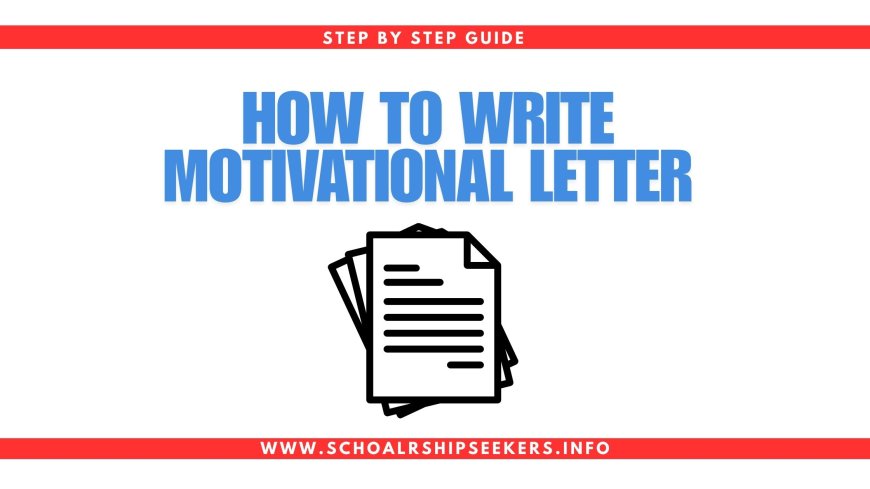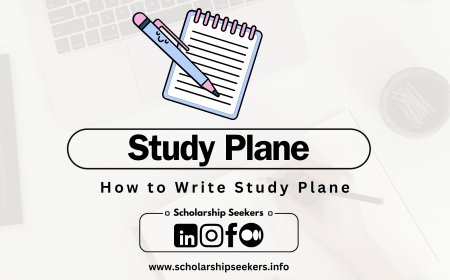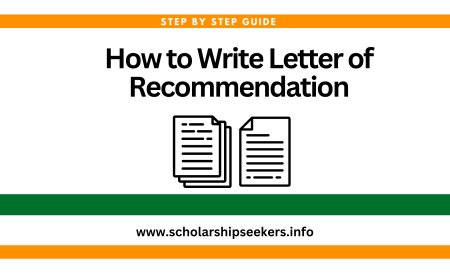Write a Motivational Letter That Gets Noticed
A practical guide to writing a motivational letter, covering essential components and tips to help you create a strong and impactful application for scholarships or university programs. This article provides a step-by-step guide on how to write an effective motivational letter for scholarships and university admissions. From crafting an engaging introduction to presenting your achievements, skillset, and objectives, learn how to showcase your strengths and stand out in the application process. Perfect for students aiming to make a lasting impression with their motivational letters.

Motivational letter
Motivational letter is also known as personal statement where you explain about your motivation that you are a perfect candidate for scholarship When you apply for a scholarship, most of the universities during admission require a motivational letter from you.

What do you have to write in this motivational letter? What points do you have to focus on? And how many parts are there? Let's see. Before writing any motivational letter, you must know its outline. Outline means its key points.
- Personal & contact details in the header section
- Title of motivation letter
- Introductory paragraphs
- The story behind your achievements
- Provide data of acquired skillset
- A paragraph for showing interest in a scholarship, admission, or another opportunity
- Propose summary of relevant objectives
- Provide a plan of execution
- Provide reasoning why you are a potential candidate
- Conclude the motivation letter
If these key points are in your mind, then you can write further paragraphs on these key points. Most of the students ask that we have a motivational letter, which is very important in the meaning of a different scholarship.
How many words should be there in it?
I recommend you that 500 to 1000 words are more than enough for any motivational letter
How many paragraphs should be there in it?
You can make as many paragraphs as you want. Or you can merge some things that you can merge. But normally we see that 5 to 7 paragraphs should be there in your motivational letter.
So first of all, let's see what should be the key points of this motivational letter. So first of all, when you want to write a motivational letter, you have to mention the details of your personal and contact details. Then you should have the title of the motivational letter.
What does the title mean?
Some people write letters for scholarships. Some people write letters for funds. So mostly because our today's lecture is on scholarships. So you have to write in your title that Motivational Letter for the Foreign Scholarship of Commonwealth. Whatever your scholarship is, you have to write for it.
Introductory paragraphs / the story behind your achievements
So in the first introductory paragraph, you have to mention about your basic education. That is, what degrees have you done? What are your higher studies? You have to mention this here. Then you have to write here, the story behind your achievements. That is, whatever achievements you have made, what was your enthusiasm behind it? What was your passion? How did you achieve all these achievements?
Provide data of acquired skillset.
You have to mention all your skills in a paragraph. That is, if you have computer knowledge, then mention it. If you have skills in languages, then mention it. If you are applying for biology, then if you have stats, bioinformatics skills, then mention it here.
A paragraph for showing interest in a scholarship, admission, or another opportunity.
The next very important paragraph is a paragraph for showing interest in a scholarship admission or another opportunity. That is, if we are targeting a scholarship, then we will write about the scholarship interest.
That is, we will write about the scholarship offer. Why are we applying for this scholarship? Obviously, they are giving us funding. Obviously, it will be a good group for us. That's why we are applying there. So we will write all these things in this paragraph.
Propose summary of relevant objectives.
Objectives means that now we are applying for a scholarship, then our objectives will be there. That is, the group we are joining, why are we going to join? Obviously, it will be relevant to our study or our search. So what do we want to do there? If you want to work on cancer, then you should have some of its objectives in mind.
Provide a plan of execution / provide reasoning why you are a potential candidate
In this paragraph, you have to tell how you will achieve these objectives. You can also add a time frame to it. For example, if you apply for a PhD, then what do you have to achieve in the first year, what to do in the second year, what to do in the third year? And for that, you should know a little about its methodology. Because whatever articles are published recently, the supervisor can follow it on that topic. Next, we have to provide reasoning. Why are you a potential candidate? Obviously, when you apply for a scholarship, you are in a competition.
And you win the competition only when you have something that is different. What does different mean? Either your publications are good, or your research skills are good, or your academic background is good. Or your extracurricular activities are good, which link to the scholarship.
Good luck for your studies and good luck for your scholarships.
1. What is a motivational letter?
A personal statement explaining your goals and reasons for applying to a program or scholarship.
2. How long should it be?
Aim for 500 to 1000 words.
3. How many paragraphs should it have?
Typically, 5 to 7 paragraphs.
4. What should go in the introductory paragraph?
Briefly introduce yourself, your background, and why you’re applying.
5. Do I need to include contact information?
Yes, include your contact details in the header.
What's Your Reaction?





































